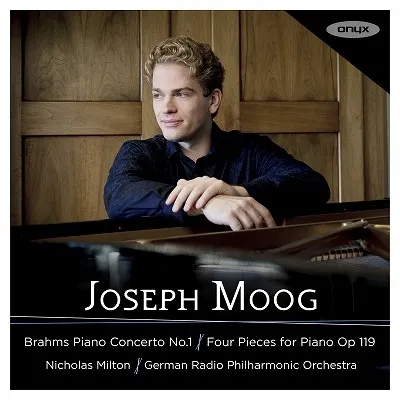
Brahms Piano Concerto No. 1 in D minor, Op. 15; Four Pieces for Piano, Op. 119 Joseph Moog (piano); German Radio Philharmonic Orchestra/Nicholas Milton Onyx Classics ONYX4214 60:02 mins
Reminding us that this was originally intended to be a purely orchestral symphony, the opening of the D minor Concerto always makes an impact. The thunderous timpani, firm rhythms and controlled tempo augur well in this recording, although I have some doubts about the depth and warmth of the sound. But conductor Nicholas Milton doesn’t milk the espressivo element in the gentle second theme, dovetailing with Joseph Moog’s first entry – clear and unfussy, with enough subtle rubato to give the music shape and direction. The pacing is always effective, but there could be a greater dynamic range, with pianissimos often too present, and fortissimos not opening out enough.
That’s rarely a complaint in the Adagio, where the muted strings match Moog’s limpid tone and hushed playing, and there are some characterful wind solos. I said rarely a complaint: the climax disappoints; that’s offset by Moog’s affectionate way with the music, especially in the many unaccompanied passages which pepper the movement. The final rondo is light on its feet, allowing the main theme to dance, rather than becoming a relentless stomp, but there could be a greater sense of relaxation in the major-key episodes, to give more contrast to the movement as a whole.
In the Op. 119 pieces the Adagio is often so slow as to break up Brahms’s long phrases, and the Andantino is much more than un poco agitato. Moog does capture the skittishness of the third Intermezzo though, and the power of the concluding Rhapsodie, despite some eccentric rubato. A mixed bag.
Read more of our reviews of the latest Brahms recordings here
Find out more about Brahms and his work here
Martin Cotton